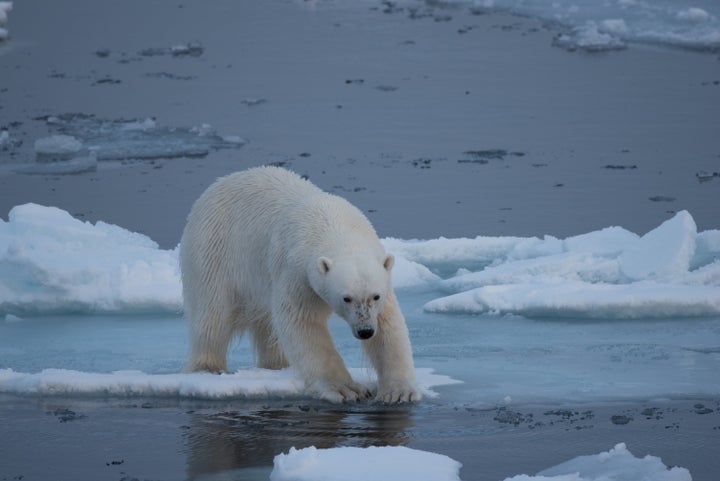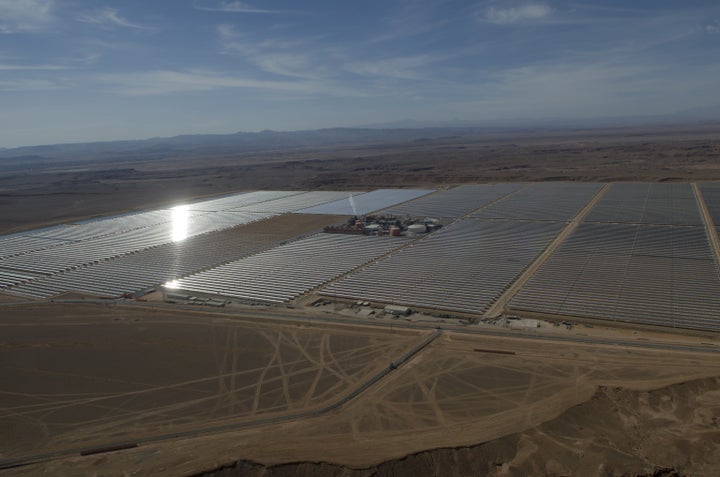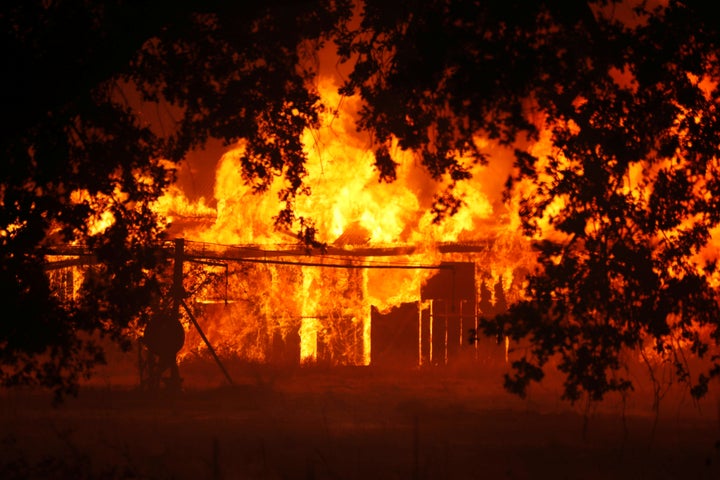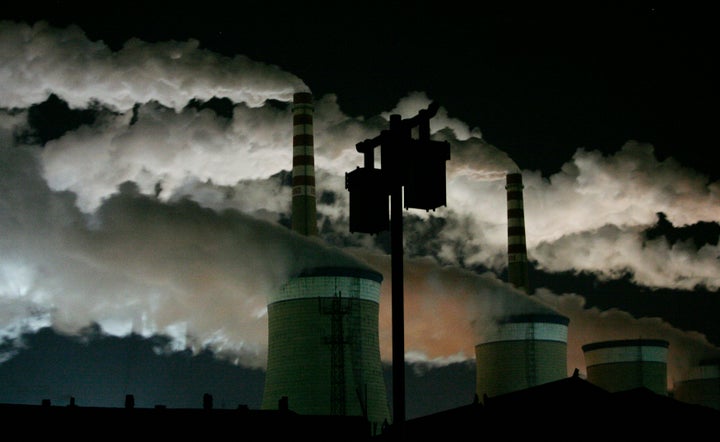
The world is on the cusp of a green economic renaissance that it must embrace ― or else face a nightmare future of runaway global warming, according to a report commissioned by several governments including the U.K., Norway and South Korea.
The next two to three years are a “critical window” for bold climate decisions that can usher in a new era of economic growth by 2030, says the study by the Global Commission on the Economy and Climate, an international green growth initiative fronted by former political leaders, including former Mexican President Felipe Calderón, former New Zealand Prime Minister Helen Clark and onetime Nigerian finance minister Ngozi Okonjo-Iweala.
“This is more than just a report,” Calderón said. “It is a manifesto for how we can turn better growth and a better climate into reality. It is time we decisively legislate, innovate, govern, and invest our way to a fairer, safer, more sustainable world.”
On Wednesday, Calderón, Ngozi, and economists Lord Nicholas Stern and Helen Mountford, the paper’s lead author, will present the report to the United Nations secretary-general, António Guterres.
The study has been endorsed by several former government and business leaders and finds that a grand economic transformation could bring a $26 trillion economic windfall, create 65 million new jobs, and avoid 700,000 early deaths linked to air pollution ― by a conservative estimate.
Surging renewable energy production, the impending end of the internal combustion engine and efficiency overhauls are all rapidly combining to make a new world possible, it points out.

But it’s all too slow, and the report warns that we have reached a one-time “use it or lose it” moment. “By 2030, we will pass the point by which we can keep global average temperature rise to well below 2C,” it says.
So key investment decisions made in the next two to three years will determine whether we lock the world onto a path to resilient growth or climatic ruin by 2030, according to the report.
One of its authors, professor Nicholas Stern, the chair of the Grantham Research Institute on Climate Change and the Environment, said he is very optimistic that humanity can avoid dangerous global warming but is “greatly worried as to whether we will move fast enough to do so.”
“Global emissions could peak within the next five years ― and it is extremely important that, indeed, they peak earlier than that,” he told HuffPost.
This is important not just for investment decisions but for bending the curve of humanity’s emissions downward. Climate scientists say that we can only emit another 800 gigatonnes of carbon ― or 20 years of business-as-usual pollution ― if we are to keep global warming below 2 degrees Celsius.
Anything more could trigger domino effects set off by rising temperatures that reinforce further warming as escalating feedback loops push the Earth into a “hothouse” state, according to a terrifying report by the Potsdam Institute for Climate Impact Research (PIK) published last month.
This could involve melting Arctic sea ice creating areas of dark water that absorb more heat, or thawing permafrost releasing methane hydrates that in turn speed up the global warming process.
Johan Rockström, PIK’s newly appointed co-director ― and one of the hothouse Earth report’s lead authors ― said the effect could be to create a future climate unlike any the planet has experienced for 50 million years.
In a worst-case scenario, this would mean a new equilibrium 4-5 degrees warmer than at present within 200 years. “It would be a planet without permanent ice sheets, with 20 meter-plus sea level rise ― so, a completely different configuration of coastal and land areas,” he told HuffPost.
“Droughts and extreme heatwaves would make large parts of the tropics uninhabitable,” he said. “Of course, that would push the world’s population toward the north and south poles, which would likely become concentration zones ― the only places you could have reasonable living conditions.”
“And there would be enormous difficulty in producing food because of the extreme uncertainty in rainfall patterns and unreliable yearly growing seasons,” Rockström continued. “The most extreme events we can fathom today would be the average. Oceans would have lost all coral reefs. Water scarcity, forest fires, new configurations of disease and vegetation ... that is the type of world we would have.”

If this grim scenario is to be avoided, emissions would have to peak within two to three years and then decline by 6-7 percent a year, Rockström said.
Far from peaking, though, energy-related greenhouse gas emissions hit a new record high last year, as cuts in the U.K., the U.S. and Japan were offset by continued carbon dioxide pollution, particularly in China.
“What matters now is getting much better incentives in place to make the [global] market work well,” Stern said. “At the moment we are subsidizing pollution activities by not charging for it. That is not a market-oriented approach.”
“Investment around the world in the renewable energy sector has now been greater than in old-fashioned fossil fuels for some years even with very weak [climate] policies. If we toughened them up ― and provided good incentives ― the move to a low-carbon society would be even stronger.”
The annual commission study, which this year focuses on inclusive growth, recommends an action plan that would include: ramped up carbon pricing, fossil fuel subsidy phase-outs, mandatory disclosure of climate-related financial risks, and a doubling of sustainable development banks to at least $100 billion per year by 2020, the same year that all Fortune 500 companies would have to set science-based climate targets.

Mountford, the lead author of the new report, pointed to “an unprecedented momentum” in moves to a low-carbon economy.
“We don’t think it’s too late yet,” she said. “The window is closing, but there are opportunities. The cost of renewable energy is dropping dramatically and we are seeing action on the ground by cities and states, which is exciting ... New York City is divesting its $189 billion pension fund from fossil fuels and Ireland has announced that it will become the first country to completely divest from fossil fuels.
However, ripples from President Donald Trump’s decision to withdraw from the Paris climate agreement in 2017 continue to be felt around the world, from Australia to Brazil.
Key financial players ― such as the European Central Bank ― remain reluctant to disclose climate-related financial risks, significant energy producers such as Norway are under pressure to retreat from divestment plans, and studies suggest that U.S. cities and states will, in practice, not be able to offset Trump’s climate-wrecking tactics.
Asked to rate on a scale of 1 to 10 how confident he is that global warming could be contained below 2C ― with 10 the most confident ― Rockström responded:
“From a scientific perspective, I am on a 7 or an 8. There is a 70-80 percent chance that we could steer ourselves back to a safe operating space on earth, based on the fact that the planet is still resilient [and] we haven’t touched the tipping point buttons yet. But on the ‘will we do it?’ ranking, I become much less optimistic and fall down to a 6.”
For more content and to be part of the “This New World” community, follow our Facebook page.
HuffPost’s “This New World” series is funded by Partners for a New Economy and the Kendeda Fund. All content is editorially independent, with no influence or input from the foundations. If you have an idea or tip for the editorial series, send an email to thisnewworld@huffpost.com
